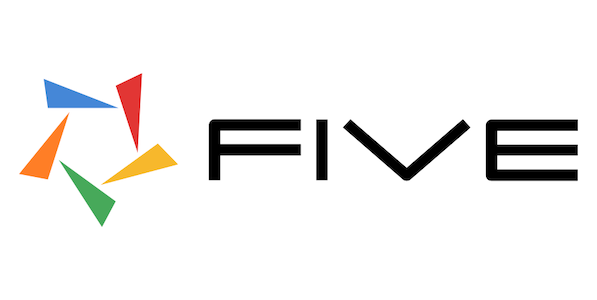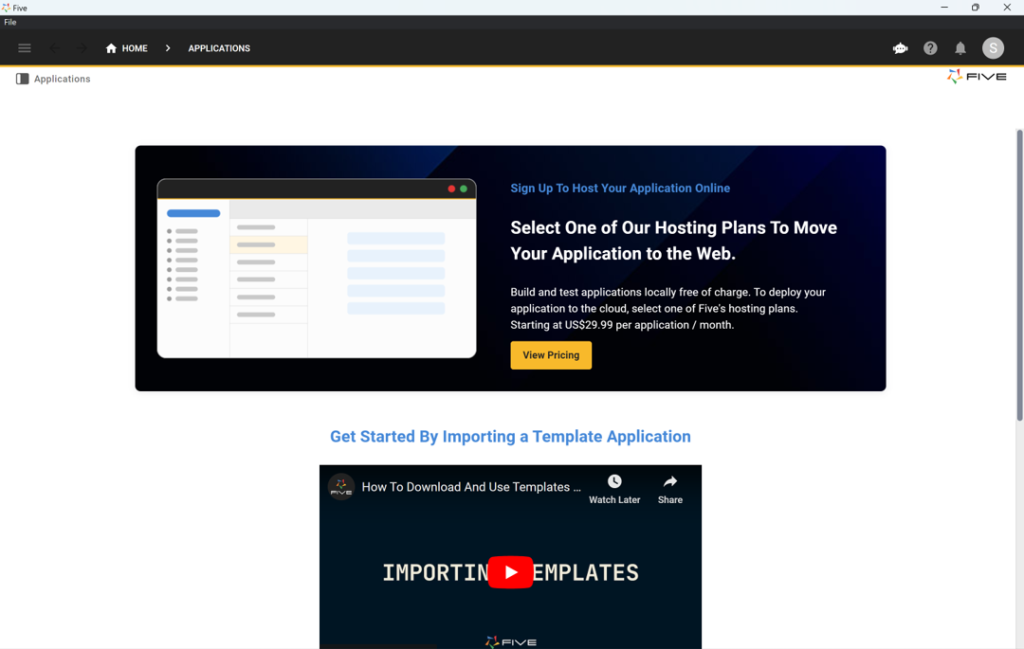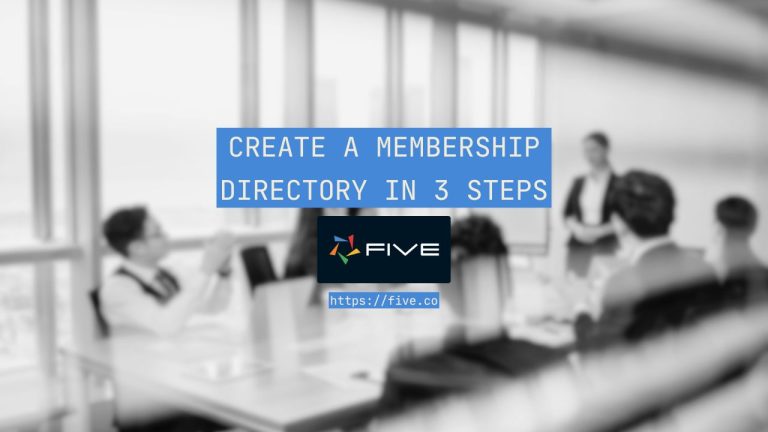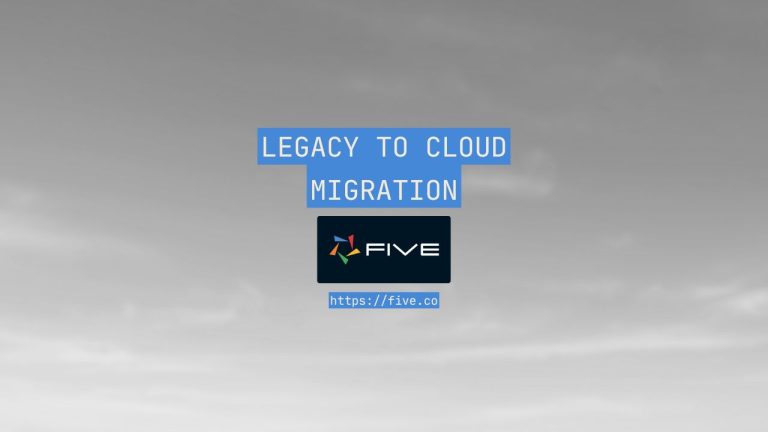Create a Tenant Portal In 3 Steps
Create a Tenant Portal: Quick & Easy Guide
A tenant portal is a web-based platform that provides property managers and landlords with a centralized system to manage tenant relations, including communication, rent payments, maintenance requests, and lease management.
Tenant portals centralize important services and information, such as tenant directories, payment history, maintenance logs, and communication channels, all in one place, making it easier for property managers to maintain strong connections with their tenants.
However, creating a tenant portal can be challenging, especially if you don’t have technical coding knowledge.
That’s where portal builders like Five come into play, making it easier to develop and deploy customized tenant portals without extensive coding expertise.
Why Do You Need a Tenant Portal?
A tenant portal provides property managers with a centralized platform to manage tenant relations and activities. This includes overseeing tenant communication, processing rent payments, handling maintenance requests, and managing lease agreements.
From tracking rent payments, updating tenant records, managing maintenance inquiries, or facilitating communication, a tenant portal improves operations, making it easier for property managers to engage with their tenants.
For administrators and property management professionals, the benefits are just as significant.
A tenant portal reduces the administrative burden by automating tasks such as rent collection, maintenance requests, and tenant communication. This not only saves time but also minimizes errors and ensures that all tenant data is organized and easily accessible.
Admins can also use the portal to monitor tenant engagement, manage lease agreements, and maintain an updated tenant database, all from one platform.
Components of Your Tenant Portal
When building your tenant portal, you likely have some key features in mind, but there are a few essential components you might not have considered.
Firstly, a robust tenant management system is crucial for helping property managers maintain updated tenant records and manage communication efficiently. This can include tools for updating tenant contact information, tracking rent payments, and managing maintenance requests, ensuring that your database is always current.
Next, a user-friendly dashboard is essential for displaying relevant tenant data, such as payment history, maintenance requests, and quick links to important resources. This dashboard should also include tools for managing tenant communications, tracking lease renewal dates, and accessing support.
A backend database, such as MySQL, PostgreSQL, or MongoDB, is necessary for storing tenant data, payment records, and other critical details. If managing a database seems daunting, tools like Five can simplify the process, making it easier to transition from a database to a fully functional tenant portal.
Additionally, incorporating security features such as encryption, two-factor authentication, and secure data storage is crucial for protecting sensitive tenant information. Advanced security features can set your portal apart by ensuring that tenant data is protected at all times.
By including these components, you can create a tenant portal that not only meets your property management needs but also enhances the overall efficiency of your operations, making it a valuable tool for both administrators and tenants.
Build or Buy Your Tenant Portal
When it comes to implementing a tenant portal, property managers face a critical decision: should you build a custom solution or buy an off-the-shelf product?
If you build one using tools like Five, you can develop exactly what you need without unnecessary features that add complexity. This allows you to tailor the portal to your property’s specific requirements, ensuring a solution that fits perfectly with your existing processes and tenant engagement strategies.
Building a custom tenant portal also means you can integrate it with your existing IT infrastructure, providing a seamless experience across all your systems. This ensures compatibility with your CRM, rent management software, and other tools, allowing you to work efficiently without the constraints of third-party platforms.
Having control over your data is another significant benefit. With a custom-built portal, you retain full control over tenant data, communication records, and payment history, ensuring that sensitive information is protected. In contrast, off-the-shelf solutions may expose your data to third parties, posing potential security risks and limiting your control over your digital assets.
Building a secure tenant portal becomes much more manageable with Five. Five offers several advantages: it accelerates the portal development process, requires minimal coding knowledge, is more cost-effective than hiring a developer, and allows you to customize your portal to meet your property management needs.
In the long run, building a custom solution can also be more cost-effective. The licensing fees for off-the-shelf tenant management platforms can quickly add up, with many solutions costing thousands of dollars annually.
Given the significant costs and potential limitations associated with many off-the-shelf solutions, this further supports the case for building a custom solution, especially for property managers with specific tenant engagement needs or those looking for greater control over their digital infrastructure.
Creating a Tenant Portal Can Be Easy

Building tenant portals used to be a complex task, requiring extensive coding knowledge and often leading property managers to hire “expert developers” who sometimes delivered subpar results.
Fortunately, times have changed, and creating tenant portals is now much easier with rapid portal builders like Five. These tools simplify the process, making it quicker and more accessible for property management professionals.
With Five, you no longer need to learn complex coding frameworks or spend hours researching expensive off-the-shelf solutions with high licensing fees. Instead, you can get started right away and have your tenant portal built and running in a single afternoon.
While there may be a slight learning curve, this approach is objectively better than traditional methods.
With Five, you can:
- Set up your web interface in minutes: Create a fully functional, custom tenant portal without needing extensive coding knowledge.
- Create a user-friendly, login-protected web interface: Ensure that only authorized users can access sensitive tenant data, enhancing security.
- Easily import your existing data: Get started quickly by importing your current tenant records and payment history, making the transition smooth and efficient.
Get free access to Five here and start building your tenant portal today.
How to Create a Tenant Portal with Five
If building your tenant portal with Five sounds appealing, here’s a quick guide to get you started.
Step 1: Access Five
If you haven’t already, sign up for free access to Five. Five offers a 14-day free trial with no credit card required. Depending on your project’s complexity and data storage needs, you may need to upgrade to a paid plan later.

Step 2: List Out Portal Attributes
Start by compiling a comprehensive list of all the attributes relevant to your tenant portal. Consider what matters most to your property management: tenant communication, rent payment tracking, maintenance requests, and more. Your tenant portal should serve as a “single source of truth,” so make sure it’s as complete as possible.
Here are some essential attributes typically included in a tenant portal system:
- User authentication and profile management
- Tenant management with detailed attributes (contact information, lease details, etc.)
- Rent payment tracking and history
- Maintenance request management
- Communication tools for tenant notices and updates
- Reporting and analytics tools
Follow our YouTube tutorial on developing a membership application, which shares many similarities with a tenant portal. This seven-step guide covers everything from database modeling to previewing your completed application. The first tutorial step explains how to create a database table in Five.
This four-and-a-half-minute video is highly recommended if your primary goal is developing a tenant portal.
The video also demonstrates how to assign different SQL data types to your table fields and visually inspect your database schema using Five’s database modeler. Additionally, it shows how Five automatically adds primary keys to all your tables.
Step 3: Launch Your Tenant Portal Online
Once your tenant portal database is ready and well-structured, you can begin populating it with the necessary data.
Using Five, you can easily upload CSV files directly into your database. Ensure that the columns in your CSV align with the fields in your database, and import the data into your database tables.
Additionally, you can create a user-friendly, web-based graphical user interface with Five. This interface can feature forms for adding or editing tenant details, charts for visualizing rent payment trends, and the ability to generate PDF reports, such as maintenance request summaries or payment histories, using data from the database.
When you’re ready to deploy your tenant portal, sign up for one of our paid plans, starting at just $29.99 per month per application.
For more detailed guidance, check out one of our step-by-step code-along guides.
Conclusion: Building a Tenant Portal
A well-designed tenant portal is essential for property managers overseeing multiple properties and tenant relationships. With tools like Five, creating a custom tenant portal has become more accessible than ever.
No longer do property managers need to settle for one-size-fits-all solutions. Instead, they can rapidly build and deploy a tenant portal that truly meets their operational needs.
Get free access to Five here and start building your tenant portal today.


